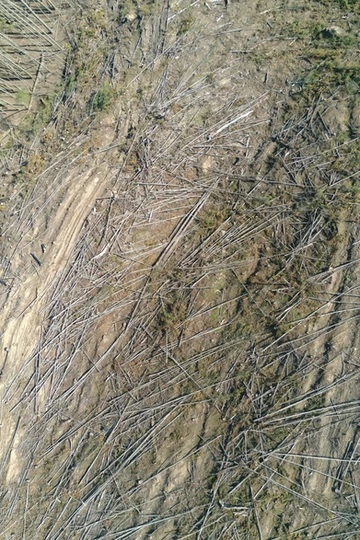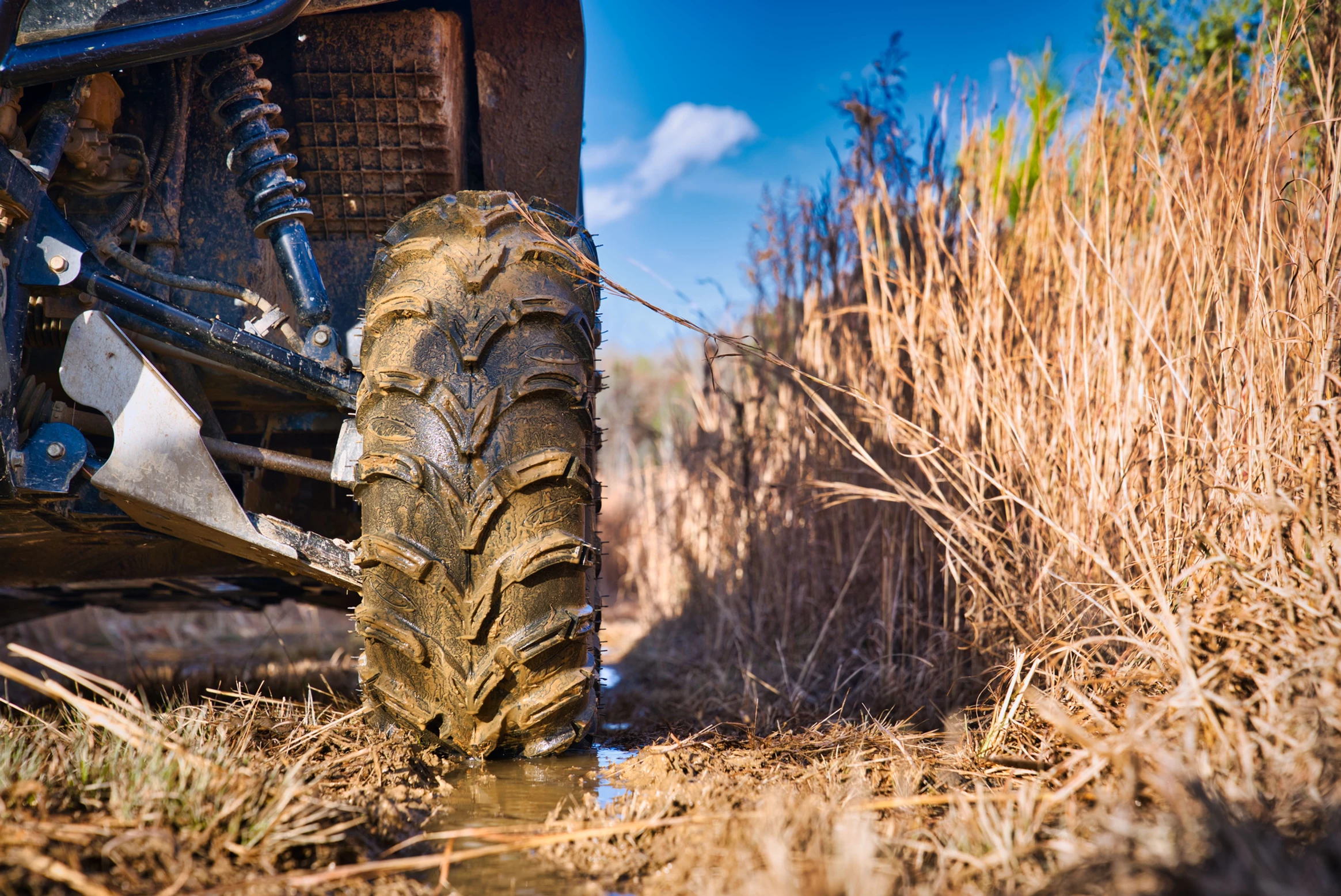
Do you have a "GOOD" clearcut?
Oct 15, 2020You have just had your timber harvested.

A clearcut.
It was time to harvest them; reduce their wildfire and forest health disease risks. The trees were mature in age, not growing substantially anymore. At the same time, maximizing your financial return to pay for that college tuition, the family beach vacation, or the down payment for a new home.
But now you are looking over your land, of which used to be composed with large 60, 70, 80 foot tall trees, luscious understory grasses and plants... and it now looks as though a tornado has come through and whipped away everything in sight. But, is it really as "bad" as it seems that first time you see the finished product? To many landowners, especially first-time landowners or those completing their first timber sale, the end result can be jarring to the eyes (and even the heart a little bit if you're honest). But before you go to complain to your forester, to your logger, to everyone and their cousin Eddie about the horrific job that was completed on your land (that you "trusted" them with)... let's look at the 5 things to consider to determine if your harvesting job was truly a bad job, or if it is simply a shell shock to your emotions.
5 Signs of a Bad Logging Job:
1. High Stumps.
Now, depending if you are looking at a pine plantation logging job OR a hardwood/natural forest harvest, will determine the expectations. BUT assuming a pine plantation, you should expect your stumps to be cut approximately 6 inches (or less) from the ground. Stumps any taller than this means you are first off losing volume to go to market and therefore losing money. But taller stumps also make reforestation more difficult for tractors and other equipment to go over old rows without damage or getting hung-up on the old stumps.
Why do hardwoods and natural forests have different expectations? Because of the larger variety of tree sizes you will be dealing with these sites. Hardwoods especially can have what is called "butt swell" which means the tree has a much wider base before slimming up to the main "stem" of the tree (think of it like hips of a tree). These swells can be larger than the cutting saw, causing the cutter man to have to harvest the tree above this swell (above the hips). Now the 6 inch rule is an average “rule of thumb”, so don’t plan to go out there with your measuring tape to be sure EVERY log was cut this low… but on average across the landscape… you are looking for very low-to-the-ground stumps…

2. Remaining logs on the ground OR merchantable standing timber.
Did the logger leave merchantable logs on the ground OR as standing timber? This IS different than what foresters will call "slash", "debris" or "trash", which are all unmerchantable trees or limbs run over to get to the volume OR the remaining left at the logging deck (you'll often see a pile of branches and tops cut off in a pile that cannot be sent to the mill due to their specifications. Some mills DO except whole-tree lengths, but will still have the branches "delimbed" off). Hopefully it is fairly obvious why left merchantable logs and standing timber is bad…. Because you are LOSING money. You did not receive all the potential income you should have (ESPECIALLY if the trees were cut down AND left).
The ONLY exception to a “few remaining logs” is simply if there was NOT ENOUGH product to create a full truckload. How can you gauge if they left a truckload or not? If there are only about 3 logs left on the ground- it is safe to assume that they would have made the truck go over weight on the roads and highways (a safety hazard) but the remaining logs did not provide enough weight to justify a truck returning – being loaded- AND sent to the mill. This exception would be especially true if a rain/weather event caused the crew to leave the site early with only a few logs left on the ground….
However, these are exceptions. Remaining, standing timber is also not ideal because they may cause reforestation concerns: shading problems or seeding in volunteer problems increasing competition control challenges. To protect you, be sure your contract clearly outlines expectations from your harvest and clearcut… including tree species and size class to be harvested, a timber sale map (with boundaries for the timber sale, not just a map of your property), and finally be sure your property is marked on the ground (boundaries AND the sale area).

3. Rutting.
Rutting is a “furrow, groove, or track in the ground made by a vehicle”. To clarify a little further… rutting is the extreme and deep tire marks that remain after a machine moves across a piece of ground, which is often wet and/or saturated. This is DIFFERENT than regular tire tracks across the landscape… For reasonable expectations you are looking for ruts (indentions) that are approximately 12 inches or MORE deep for an extended length. The depth and length are important to understand, as sometimes an operator may venture towards a stream bank or even across a track of land that may get “wet” more quickly than anticipated, causing them to sink down into the ground.
NOW a good harvester/logger/forester will instantly recognize what has happened and retreat back to the high ground before causing any more damage, and may even try to “rehab” the site by putting “slash and debris” (the limbs and other unmerchantable trees) across the rut/damage site to reduce erosion (they are not trying to “hide” the damage, simply do what is recommended in the best management practices to reconcile their mistake and reduce soil erosion and sedimentation into any waterways).
However, if they keep “pushing through” and cause long “sunken tracks”, that is a red flag for a poor harvesting job. Rutting causes extreme soil damage that compacts the ground and can cause erosion issues which in the end, reduce your site productivity for your new crop of trees. Also, like everything else… you’re looking across the landscape at the overall picture. If there are a “couple” of “ruts” that are approximately 2 feet in length on a 100-200 foot long skid trail… that does not signify a poor logging job. Although rutting is of serious concern and very important for you to pay attention to, to keep your property in the best shape possible… remember to lift your eyes up from the 3’ x 3’ section to see the big picture.

4. TRASH.
Okay. Even though this one isn’t directly related to the harvesting itself, it is still an incredibly important point to the entire job and reputation of the crew. I would also like to keep the focus on when the logging job is completed. Because, like other operations (especially mechanical) there is going to be maintenance occurring on the vehicles and machines (oil changes, tire changes, every other mechanical type maintenance)… the crew may be bringing out lunch to the site (especially depending how far out from “town” your tract is). If you visit the site during logging, you are likely to see a pile of trash at or near the loading deck… and you would like to see the small trash (such as lunch) to be removed with them at the end of each day, but you’ll likely to see the tires and oil filters and containers continue to stay in a pile while they continue the active logging.
What you are looking for is remaining trash at the END of the harvest job. They should remove all tires, oil containers, oil filters, air filters, tubes, buckets, and yes, their lunch bags and trash. Will I criticize a crew if I see a McDonalds napkins flowing across my logging deck after their gone… probably not… one napkin or even three is not worth my time IF everything else was picked up appropriately. However- there should not be any substantial trash left at the logging site, or anywhere else at the property. There should not be containers of oil filters, boxes or any other trash and debris left on site. Be sure the removal of all trash IS stated in your contract as well, to enforce cleanup needs if necessary.

5. BEST MANAGEMENT PRACTICES.
These are voluntary forestry practice recommendations to keep the environment in the best condition possible, specifically to protect clean water during forestry operations. It is stated best management practices are “common sense, economical practices to keep waterways swimmable, fishable and drinkable.” These will vary by state, so be sure to check with your state’s forestry commission/department to get specifics that would apply for you. Overall, the best management practices (BMPs) will cover some of the tips mentioned above, such as trash removal and rutting, but also includes protective measures to put in place around different stream systems, lakes and ponds, floodplains and wetlands, canals and ditches, and even how to construct roads (permanent and temporary road systems).
Because BMPs can vary from state-to-state I will not give specific examples of what to look for to determine BMPs are being followed (in this article), but will emphasize to have a line item in your contract stating all of your state’s best management practices will be followed. As a landowner, it IS important for you to understand what BMPs are applicable for your site within your state, because in the end, any erosion and pollution caused into waterways is your responsibility. Also before the logging job is started, talk with your forester about which BMPs may be applicable for your land – what those BMPs should look like – this way you will have reasonable expectations for the end result. In some states BMPs recommend leaving trees along stream banks and sometimes a particular “width” on both sides of the stream bank… if you did not realize you had a “stream” (perhaps its an intermittent or ephemeral drainage you didn’t know you had on your land), seeing the left trees unharvested may lead you to believe that “merchantable timber” has been left (as stated above in tip #2) rather than best management practices being followed.
Harvesting your land, especially for the first time, is an exciting time and opportunity - but can come with unexpected emotions at the end of the operation. It is important to have all your questions answered by your consultant and local foresters before you start logging, as well as having everything covered in a written contract. Although in many locations a verbal contract can be “legally binding” … if a violation occurs to the agreed upon operation or expectations are not met, it will become a “he said – she said” suit and difficult to enforce any rehab work that may be needed for poor service.
I will always believe most loggers and foresters are ethical men and women who want to do right for their job AND the environment (because lets face it, if they don’t…they’re putting THEMSELVES out of a job… and no one really wants to do that, even if that is their only motivation).
BUT as the landowner- it is YOUR land that you have invested 10-15-20-30+ years of your life into for this moment. Be sure it is done correctly… but also be sure your expectations are correct AND emotions are ready for the job.

STAY INFORMED.
STAY CONNECTED.
Join our community to receive exclusive insights, expert tips, and the latest updates directly to your inbox. By subscribing to our newsletter and podcasts, you'll gain access to valuable content that helps you stay ahead in your industry. Don't miss out—sign up now to stay connected and informed!


